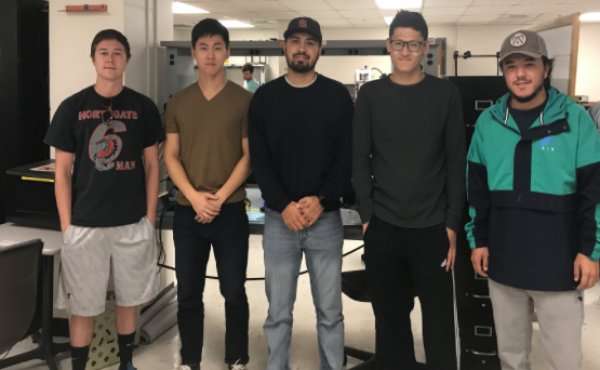Developing a tool to increase mobility for the blind

People with vision impairments face a perpetual problem: maneuvering through a world filled with obstacles and hazards. Meet Good Vibrations, a team of CU Boulder electrical engineering students who created Pulse, a product that will increase mobility for the blind.
The blind navigate the world in different ways, but each has drawbacks and limitations. Guide dogs can't communicate what type of obstacle the user is facing, only that there is one. This can lead to confusion if the user's normal route to the grocery store is being blocked by construction. Another example is the white cane, which allows users to identify obstacles, but only on the ground, leaving them vulnerable to low-hanging objects.
The brainchild of Grant White, the idea for Pulse came about while he was watching the TV show Covert Affairs, in which a blind character used a handheld laser device instead of a cane.
"About three years later I had to come up with a research proposal for a writing class," White said. "I thought that device would make a good proposal. When my team was choosing a project for our senior design lab, I suggested my project. Since I had already done a lot of research and had an initial design, our team decided to do it."
Pulse uses optical sensors combined with image recognition that identifies objects and obstacles in real time and informs the user of the specific type and distance. It is also more precise about an object's angle to the user. The result is increased mobility for the blind.
The five team members have the expertise in analog design, signal processing and software development to develop this advanced sensory system for the blind and to share the product with the world. White has consulted with people with visual impairments to learn what features were most important.
"They all said that, whether they used a cane or guide dog, they want to know what exactly they were avoiding," White said. "The part that makes this project beneficial and unique is the combination of object detection and image recognition that will give the visually impaired almost as much information about their surroundings as sight."
After collecting and analyzing data, the team will design the system of optical sensors, microprocessor and vibrating belt to use minimum power. The entire system will be light and comfortable to wear.



















